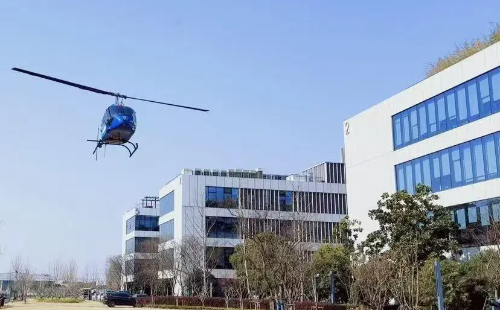Aviation law to be amended with major revisions
A draft amendment to China's Civil Aviation Law was submitted on Feb 24 for its first review by the Standing Committee of the National People's Congress, the country's top legislative body.
The revisions aim to enhance aviation safety, promote the development of general aviation and the low-altitude economy, strengthen passenger rights protections and improve regulatory oversight of civil aviation activities.
Transport Minister Liu Wei said the law has played a key role in ensuring safe and orderly aviation practices since its enactment in 1996, but he emphasized the need for updates to address emerging industry challenges. "The amendment prioritizes civil aviation safety," Liu said.
The draft bans unauthorized activation of emergency exits, disruptive behavior on aircraft and spreading rumors about aviation safety. It also empowers flight captains to take decisive action against unruly conduct.
The 15-chapter, 255-article draft addresses airspace management to support the growing low-altitude economy, requiring the airspace classification to help balance economic development needs. It aims to boost general aviation by expanding infrastructure networks, fostering market growth and simplifying approval processes.
Proposed changes include allowing general aviation firms to operate select scheduled flights, merging dual licensing requirements into a single operational permit and implementing category-based management to stimulate market activity.
China has made significant progress in promoting general aviation and the low-altitude economy. Last year, 145 new general aviation enterprises were established, 26 general airports were built and more than 1.1 million unmanned aerial vehicles were newly registered under real-name systems. Total UAV flight hours reached 26.66 million, up 15 percent from the previous year.
Despite COVID-19 pandemic-related disruptions, the sector returned to profitability last year and continues to grow. During the recent 40-day Spring Festival travel rush, which ended on Saturday, a record 90.2 million passenger trips were handled.
At the Civil Aviation Administration of China's annual conference last month, CAAC head Song Zhiyong outlined plans to build stronger safety systems and service networks to develop the low-altitude economy while ensuring security.
The CAAC has set 2025 targets of 161 billion ton-kilometers of total transport turnover, 780 million passenger trips, 9.5 million metric tons of cargo and improved profitability.
With these amendments, China aims to reinforce its position as the world's second-largest civil aviation market, fostering a safer and more dynamic industry.
luowangshu@chinadaily.com.cn





 play
play